All-Star Community Science Volunteers Visit Goddard Space Flight Center and Learn What NASA Satellite Data Reveals About Threats to Streams
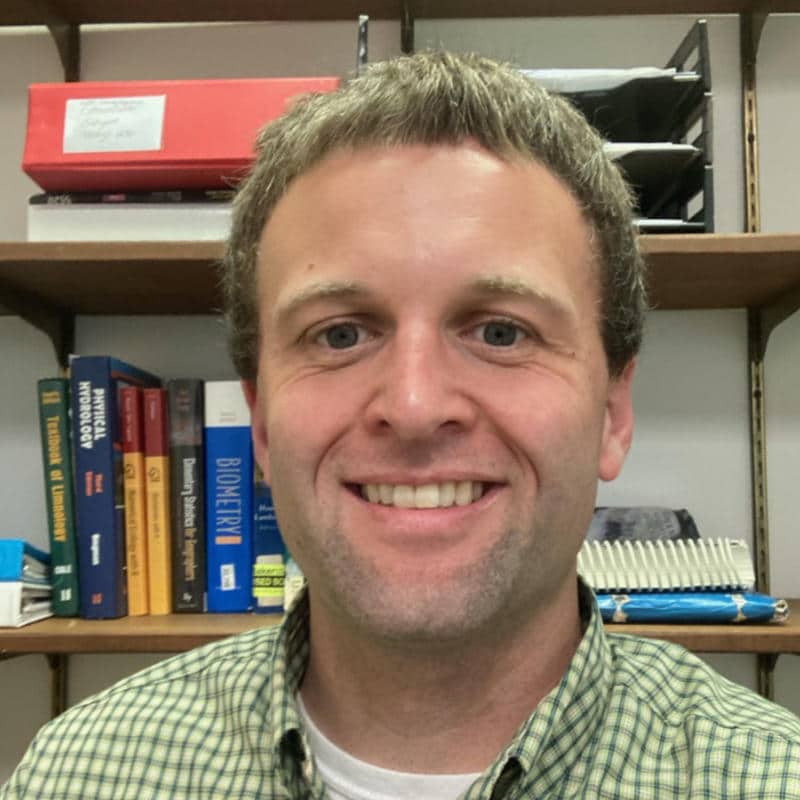
By Daniel Myers, Ph.D.
I recently had the honor of joining two of Stroud Water Research Center’s stellar community science volunteers, Carol Armstrong and Dave Manning, on a big adventure.
Along with being Penn State Master Watershed Stewards, Carol and Dave also monitor water quality in local streams using the Stroud Center’s EnviroDIY™ Monitoring Stations, support other watershed organizations, and educate local governments about the water resource challenges in their communities and ways to solve them.
However, instead of putting on waders and going into the streams like they normally would, they joined me on a journey to the NASA Goddard Space Flight Center — where satellites and other spacecraft are built to study Earth, our solar system, and beyond — to learn more about how NASA engages on projects with communities. I also had the privilege to learn about the immense size of these community efforts on a separate trip to NASA Headquarters in Washington, D.C.
For the past 10 weeks, the Stroud Center has been collaborating with the National Park Service and NASA DEVELOP to study water quality in Washington-area national parks using NASA satellites.
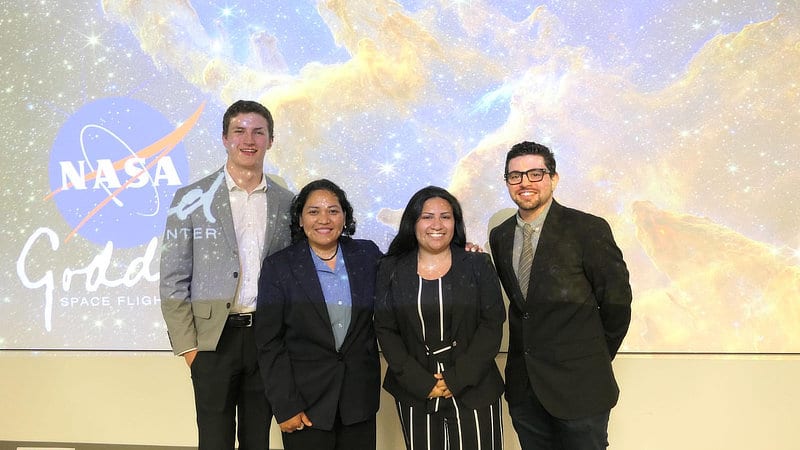
Four NASA DEVELOP scientists worked on the capacity-building study this summer and presented their findings about how changes in land cover and climate have affected the health of national park streams over the past two decades. We were joined by scientists of the National Park Service National Capital Region Network, which monitors stream water quality and aquatic ecosystems in the region’s parks. The partnership between the Stroud Center and the National Capital Region Network is led by Diana Oviedo Vargas, Ph.D.
At the Goddard Center, we learned all about NASA projects to build satellites that look not further into space, but back at the Earth to create data-rich portraits known as Earth observations. We were given a morning tour that included the world’s largest clean room (for building spacecraft without dust and other particles), a giant centrifuge that accelerates large satellites up to 30 times normal gravity, “space simulators” that heat and cool instruments several hundred degrees, and the mission control rooms for various Earth observation satellites including the Landsats, where scientists eagerly programmed maneuvers and monitored orbits on big computer screens.
We felt inspired walking in the footsteps of Nancy Grace Roman, who was the first female NASA chief and paved the way for telescopes in the sky. These include her namesake, the Nancy Grace Roman Space Telescope, which we witnessed being constructed in the big clean room on our tour. We also saw a display of dinosaur footprints that were found in a sedimentary rock under one of the newer buildings of the center.
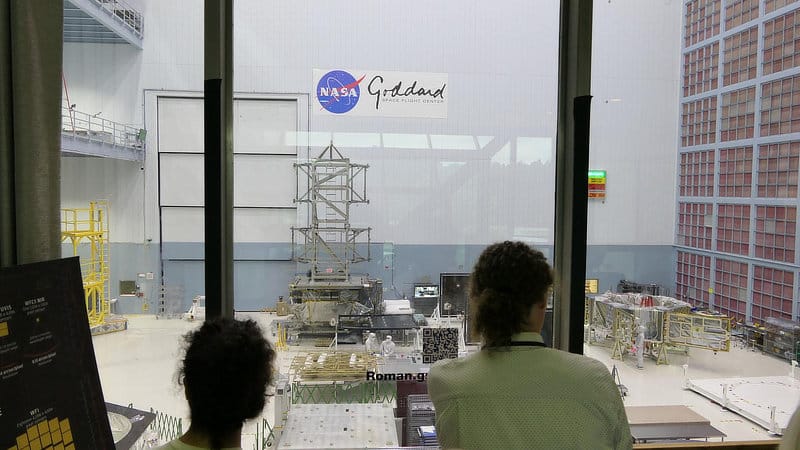
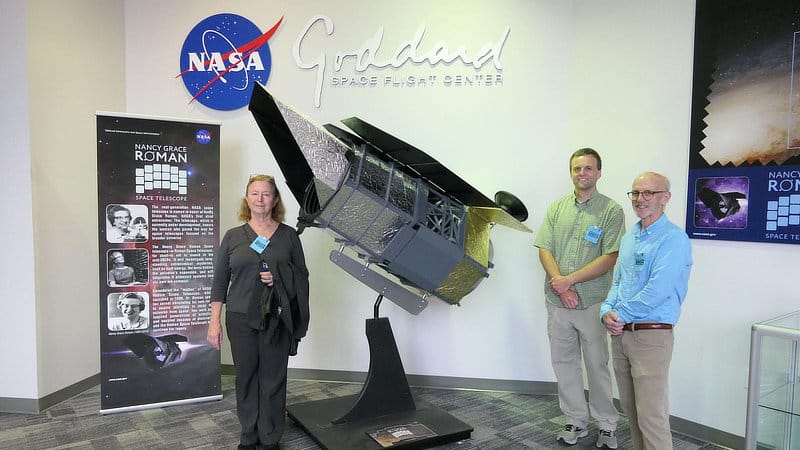
After lunch, we attended closeout presentations with the NASA DEVELOP team, where data from the Earth observation satellites were applied to solve important problems involving water resources.
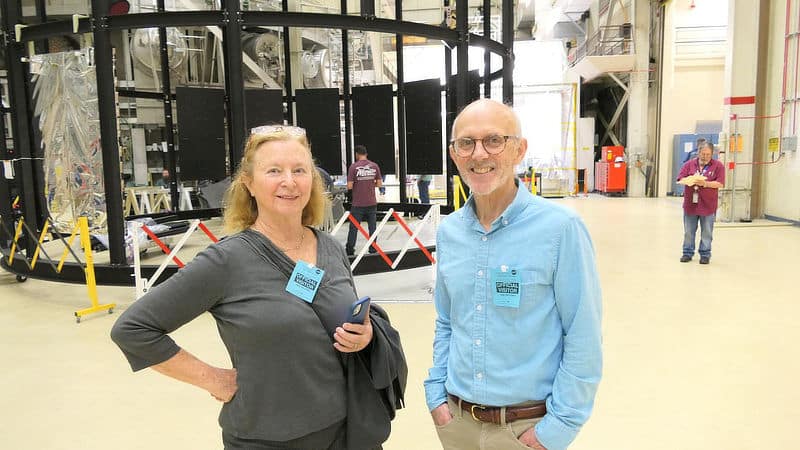
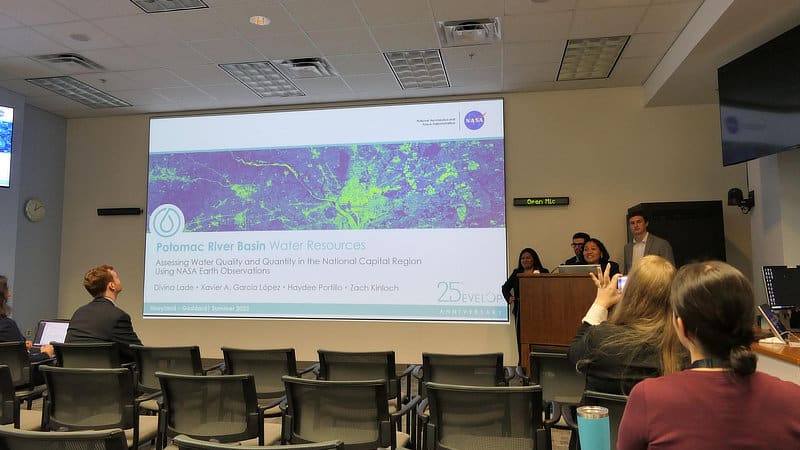
Did you know that some national park streams in the Washington, D.C., area are getting saltier? The presentation of our project showed how the expanding metropolitan area has contributed to higher specific conductance (an indicator of salts and stormwater pollution) in streams such as Rock Creek, which could be problematic for fish and aquatic invertebrate populations. Also, changes to springtime vegetation growth and seasonal cycles in soil moisture could be related to the water quality of the park streams, affecting stream conditions like dissolved oxygen and water temperature. These findings could be important in understanding causes behind water quality trends.
We additionally learned how the upcoming Plankton, Aerosol, Cloud, ocean Ecosystem (PACE) satellite can inform studies of global carbon cycling and biogeochemistry during a presentation by a second DEVELOP team that the Goddard Center coordinated.
We finished the day with NASA and National Park Service scientists, discussing how the National Park Service, by managing park streams, helps protect water quality for residents of the Washington, D.C., area. Driving home, we looked up at the sky and wondered how future freshwater research can benefit communities by engaging them in the use of high-tech satellite capabilities.
DEVELOP Day Celebrates Program’s 25th Anniversary
Two days later, the Stroud Center was again engaging with NASA scientists, learning how we fit into the big picture for the community projects. I joined the National Park Service at NASA Headquarters on Hidden Figures Way in Washington, D.C., for DEVELOP Day to celebrate 25 years of the program.
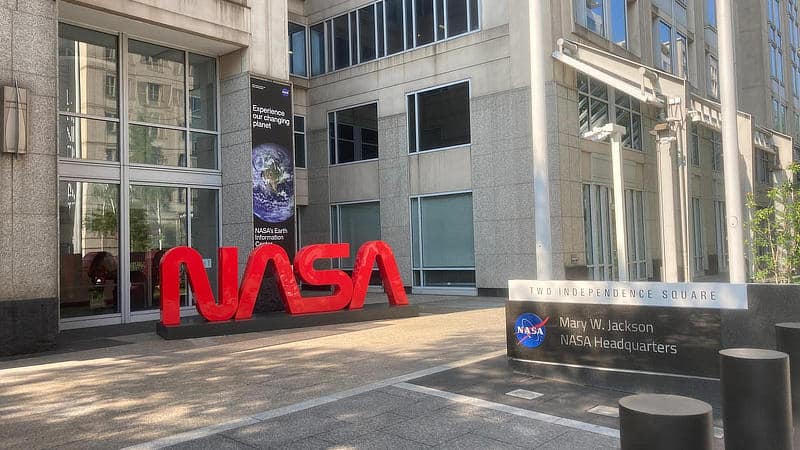
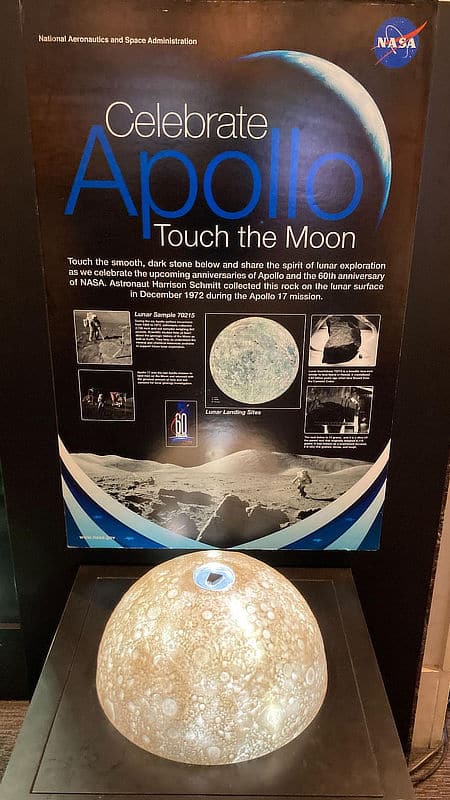
I learned that NASA DEVELOP has worked on 1,200 projects in 67 countries, helping over 1,100 community partners build capacities to solve problems related to water resources, conservation, and land use planning. Partners have included nonprofits, government agencies (local, state, federal, and tribal), and international groups. I felt inspired that we were part of a much larger effort using Earth observations to help communities in need.
After buying astronaut (i.e., freeze-dried) ice cream at the NASA gift shop, I headed into a conference area behind a moon rock retrieved by the Apollo 17 mission (yes, you can touch it). Here, over 20 DEVELOP teams from around the country presented their work. For example, one team used NASA satellites to monitor Chilean water resources threatened by climate change, while another team used the satellites to detect invasive plants in national monuments out west.
In a small theater of the conference area, NASA Earth Science Director Karen St. Germain, Ph.D., provided opening remarks about sharing science; John Paul Schmit, Ph.D., of the NPS National Capital Region Network presented the importance of Earth observations for park managers to better understand water quality stressors; and Xavier Garcia Lopez gave a highlight talk about our DEVELOP team’s study. Our team (Xavier, Haydee Portillo, Divina Lade, and Zach Kinloch) also gave a well-attended poster presentation explaining the implications of land use and climate change for water quality management.
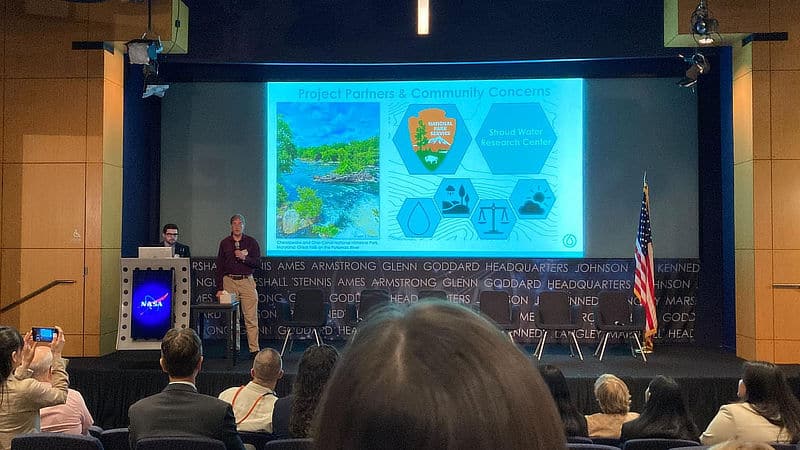
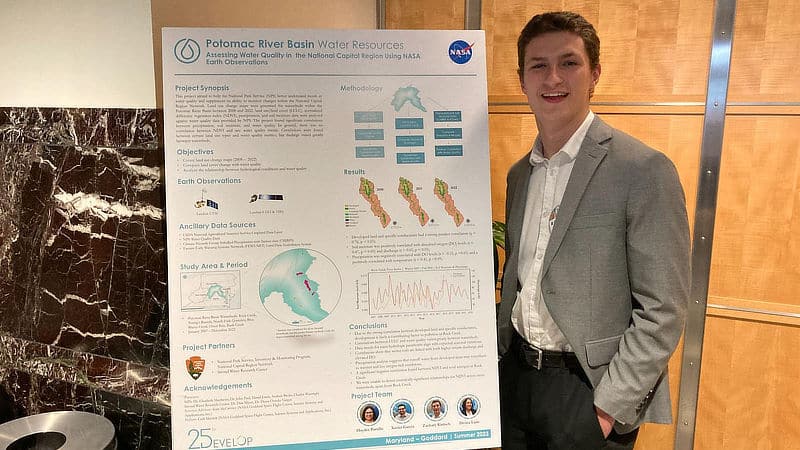
The Stroud Center will receive a report of the findings and management implications in the coming weeks, which will help inform our ongoing studies of national park streams in the Washington, D.C., area and will be part of a social media campaign about the DEVELOP project (so stay tuned to Twitter, Facebook, and LinkedIn).
We are grateful to Carli Merrick and Sean McCartney at the Goddard Space Flight Center for advising the team.
If you or your organization is interested in the DEVELOP program, learn how to become a participant or partner.
The Future of Freshwater Research
Earth’s freshwater resources face complex challenges due to climate change and watershed land management; this includes our home waters in southeastern Pennsylvania that the Stroud Center works to restore and protect. We look forward to learning more about how Earth observations may continue to help us advance global knowledge and stewardship of fresh water.



